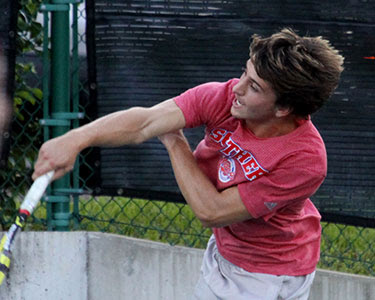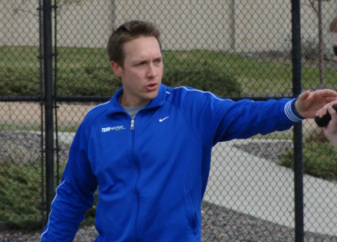In the world that we live in today, there isn’t an aspect of our lives that has not been touched by globalization. What is globalization? Simply explained, it is a situation of nations being integrated across inter national boundaries in whatever we do; be it business and economics or political views or culture or the sharing of grief. No doubt, however, that “studying abroad” would top the list as the oldest example of globalization. Though studying overseas is very commonplace today, it still retains a charm that is not easily replicated.
Very easily the greatest charm in studying abroad is the impact that such education impacts the rest of a person’s life; it is a milestone event. Any list of the reasons for choosing to study abroad would include the following:
- Improving academic caliber
- Development of professional skills
- Enhancing employability
- Appreciation of cultural diversity
- Value-addition to personal history
Every survey has shown that US universities are the most-favorite destination for students from all over the world. Besides being veritable reservoirs of knowledge, universities in US have also earned the reputation of being the most welcoming of institutions and of imparting the highest quality of education, when compared to any other in the world.
Why is the US the most sought-after destination for studying abroad? I will answer this question by elaborating on the 5 reasons listed above (for studying overseas).
Improving Academic Caliber
Every student, wishing to gain further knowledge in his chosen subject of study, can be sure that a university in the US will offer him the following — faculty who are the most learned and updated on the subject, the access to the most advanced and updated knowledge of the subject and a learning environment which is unique, very practical and very supportive. These are the heady mix of ingredients that every serious student aspires for.
Development of professional skills
Universities in the US are invariably equipped with modern equipment, tools and facilities for the highest level of professional studies. Therefore, students not only gain academic knowledge but also gain hands-on experience of working with the latest tools of the profession. Except in the area of Arts, for which the European universities are the premier ones, American universities are the leaders in STEM subjects (Science, Technology, Engineering and Mathematics) and Medicine.
Enhancing Employability
More and more employers are seeking to recruit those who have been educated abroad, particularly ones who have been educated in the US. Why is education in the US such a sought-after qualification? The answer lies in the fact that an employee who has studied in the US is sure to have been exposed to modern theories, methodologies and the latest equipment; these qualities are a boon to any employer.
Appreciation of cultural diversity
Irrespective of one’s profession, being able to communicate effectively goes a long way in professional development. Nothing prepares a person better than life spent on a university campus in the US where there are students from all over the world and is therefore the perfect medium for breaking-down cultural barriers. The reality is that our workplace is more globalized than it was ever before, therefore, being able to communicate effectively across multiple cultures, without any inhibitions is a critical requisite for personal success.
Value-addition to personal history
No person can claim to a higher status in society than one who has studied abroad at an established seat of learning. Studying in the US is an eye-opener; it broadens the horizon of those arriving from less-developed countries. When one has studied in the US and returns to their home country, it is sure to make heads turn or draw second-looks in a social gathering!
Several of those who studied abroad have also gone ahead and sought and accepted US citizenship and have integrated well in American society and excelled in the profession of their choice. They have earned national and international recognition and have won laurels for their contributions. American society is an amalgam of several cultures created by waves of settlers originally from Europe but subsequently from nations around the world too.
In spite of the attractiveness of continuing to live abroad, after completing higher studies, many choose to return to their home country. The seemingly natural act of returning is loaded with advantages in favor of the home nation. It immediately increases the intellectual capital of the home nation. In the longer-term, the returnees carry forward business and professional relationships, which are effectively the seeds of collaboration and knowledge-sharing ventures.
Those who study abroad should not fail to give back to their home nation. Upon their return, they can do so by engaging themselves in 3 broad areas, namely politics (or public life), economics (or business) and social (education, health).
(a) Politics — I have mentioned earlier that studying abroad intrinsically enriches a person’s character. Alumni, therefore, are potentially capable of providing transformational leadership, which is commonly missing in less developed and under-developed nations.
(b) Economics — In the field of business and economics, because they have studied (lived) abroad they have experienced the comfort of modern and superior products and the power of technologically advanced methods of production; they are therefore very capable of managing the introduction of new products and modern production facilities.
(c) Social — In the field of education and health, because of their superior personal experiences (while studying/living abroad) they can introduce the best similar practices and mentor the next generation of youth and improve their standard of living.
There is yet another dimension of enrichment – it occurs when those who have studied abroad return to their home country and pursue their profession. The students group themselves and form alumni associations. Alumni associations are not merely for bragging rights but they continue the spirit of camaraderie and play an inspirational role for others to study too in the same institution. In sum, it is a continuation of the engagement with the alma mater by its students.
Alumni outreach events and programs are ideal platforms for saying thank-you to the university to which they owe their gratitude for success. They are best qualified to use the lessons learned from their experience of studying and living in the USA.
Institutions all around the world have a plan in place for engaging their alumni. Failure to have such a plan will mean missing out on opportunities of several kinds. Alumni, for example:
ü Serve as ambassadors, advocates and mentors for the next generation of students to inspire them to study in the same institutions
ü Pool financial resources for scholarships
ü Donate to establish endowments for research projects, for amenities (example, library, study halls, auditoriums, sports arena, etc.)
ü Create and fund faculty positions for research and teaching a super-specialized subject
A final word; studying abroad is a serious decision soaked in benefits which can last a life-time; it is not a matter to be dismissed as simply a glorified holiday.
By HF Contributor: A. Adeni
 Most young students want to perform well, whether it’s in school, sports, or music. When they don’t, many of them suffer needlessly due to an incorrect interpretation of their results. It’s all too common for kids to question their self-worth, or at least their natural gifts, when they don’t succeed. This is especially true when others around them are making progress at a faster pace. What if we could give our children a new perspective on a performance formula that removes the emotions of what they call failure?
Most young students want to perform well, whether it’s in school, sports, or music. When they don’t, many of them suffer needlessly due to an incorrect interpretation of their results. It’s all too common for kids to question their self-worth, or at least their natural gifts, when they don’t succeed. This is especially true when others around them are making progress at a faster pace. What if we could give our children a new perspective on a performance formula that removes the emotions of what they call failure?

 But all of us know people who have a ton of friends, or expensive toys, or lots of activities – and they’re still not happy.
But all of us know people who have a ton of friends, or expensive toys, or lots of activities – and they’re still not happy.

